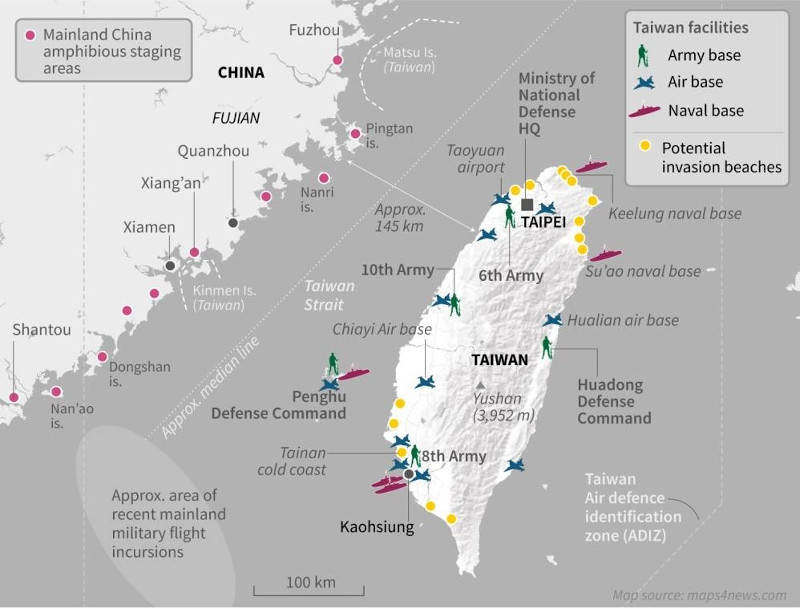In the picture
The Taiwan Strait, between the coast of southeast China and Taiwan [NASA].
[ English version]
"Breaking news: U.S., Taiwan and Japan defeat a conventional amphibious invasion by China and preserve Taiwan's autonomy. However, the defense has come at a high cost. The U.S. and its allies have lost dozens of ships, hundreds of aircraft and tens of thousands of military personnel. Taiwan has seen its Economics devastated. Moreover, the high losses are going to damage the U.S. global position for many years to come."
Sound realistic? Although it's just a fictional scenario, this is what would probably happen if today China finally decided to launch an amphibious invasion of its neighboring island to the southeast. That's the main conclusion of 'The First Battle of the Next War,' the new war game developed by Washington's Center for Strategic and International programs of study (CSIS) to test all plausible scenarios should a conflict break out on and around the island of Taiwan.
The People's Republic of China sees Taiwan as a legitimate possession belonging to it, as well as an asset of enormous strategic value in expanding its control over the South China Sea and its surroundings. Xi Jinping's government considers that region to be Chinese territorial waters and has been undertaking serious modernization of its naval capabilities and technologies in recent years, transforming an armada from basically coastal patrol forces into a relevant fleet. In 2022 alone, Chinese shipyards launched its third aircraft carrier (CV-18 'Fujian'), an amphibious assault carrier subject 075, three units of its large destroyer subject 055 and several multipurpose frigates subject 054A; in addition, five destroyers subject 052D are nearing completion at the Dalian shipyard.
Thus, in the face of recent reports that an invasion is highly likely before the end of the decade, the war game provides an in-depth look at how it would be conducted. The information used for the development and the conduct of the exercise was drawn from numerous unclassified assessments, including that of military analyst Michael O'Hanlon and Bradley Martin of the RAND Corporation. Through public analysis and information available, war games are a very useful tool for policy makers and research institutions seeking to understand the forces involved, and thus then be able to predict how that status future might unfold.


